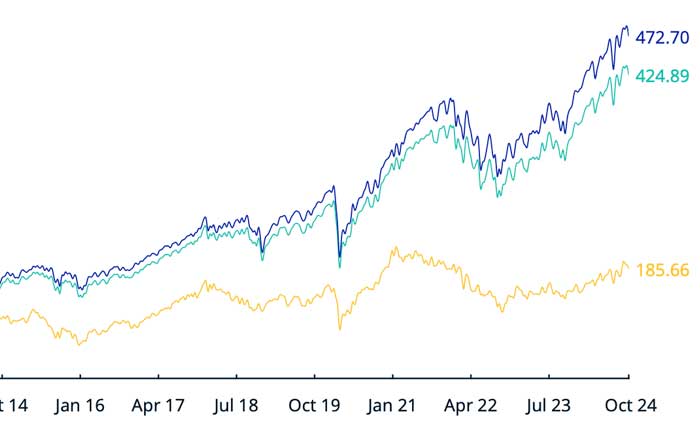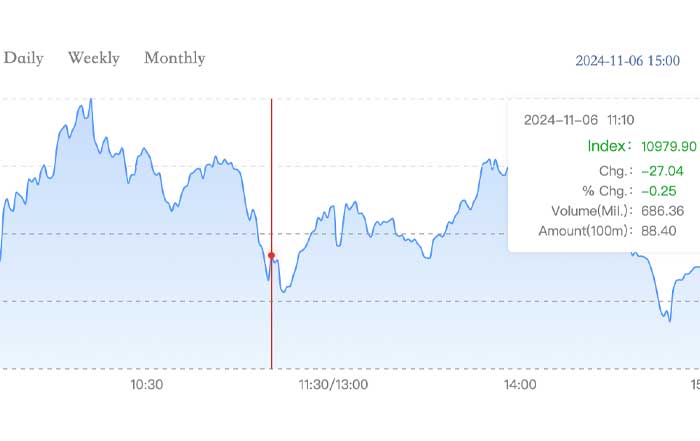The global rollout of 5G technology has been one of the most significant developments in digital infrastructure in the last decade, reshaping industries, unlocking new business models, and accelerating innovation across both developed and emerging markets. By 2025, the world has moved beyond early adoption to widespread integration, with United States, Europe, China, and Asia-Pacific nations leading the charge in creating a new landscape of connectivity that supports everything from artificial intelligence applications to sustainable urban development.
For businesses, 5G represents far more than faster mobile internet. It is an enabling force that underpins entire ecosystems of advanced technologies, including autonomous vehicles, smart factories, immersive media, telemedicine, and next-generation financial services. With ultra-low latency, enhanced bandwidth, and the ability to connect billions of devices simultaneously, 5G has emerged as the backbone of the Fourth Industrial Revolution.
This article explores how 5G is transforming business sectors worldwide, what opportunities and challenges it presents, and how forward-thinking organizations are adapting to remain competitive in this rapidly evolving digital economy.
5G Global Impact Explorer
Speed
100x faster than 4G
Latency
Ultra-low response time
Devices
Massive connectivity
Global 5G Adoption Timeline
40% of global mobile connections by 2025
The Technical Foundations of 5G
Unlike its predecessor, 4G LTE, which primarily focused on faster speeds for mobile users, 5G was designed with a broad vision: to provide the infrastructure for a hyper-connected world. Key characteristics include:
Enhanced Mobile Broadband (eMBB): Delivering speeds up to 10 Gbps, supporting high-definition streaming, AR/VR applications, and immersive business communications.
Ultra-Reliable Low-Latency Communication (URLLC): Reducing latency to as low as 1 millisecond, enabling mission-critical applications such as remote surgery, industrial automation, and autonomous driving.
Massive Machine-Type Communication (mMTC): Supporting up to one million devices per square kilometer, crucial for IoT ecosystems in smart cities and industrial supply chains.
These capabilities position 5G as a transformative enabler rather than just an incremental upgrade, laying the foundation for disruptive business innovation.
Transforming Global Industries
Manufacturing and Industry 4.0
Smart factories have become a defining application of 5G technology, particularly in countries like Germany, Japan, and South Korea, where advanced manufacturing already dominates the economy. By integrating 5G-powered IoT devices, companies can achieve real-time monitoring of production lines, predictive maintenance of equipment, and autonomous robotics operations.
Siemens, for instance, has piloted 5G-enabled factories where wireless sensors provide instant feedback loops to digital twins, significantly reducing downtime and optimizing energy consumption. Similarly, Bosch has deployed private 5G networks in its plants, creating highly flexible and automated production systems that set benchmarks for the rest of the industry.
Learn more about innovation in business and how new technologies like 5G are driving growth.
Healthcare and Telemedicine
The pandemic accelerated the adoption of telemedicine, but 5G has elevated it to new levels by ensuring seamless real-time video consultations, remote diagnostics, and even robotic-assisted surgery. Ultra-low latency enables surgeons to operate on patients thousands of miles away with robotic arms, expanding access to high-quality healthcare in remote or underserved regions.
Hospitals in the United States and Europe are leveraging 5G networks to transmit large imaging files instantaneously, improving diagnostic accuracy and treatment outcomes. China Mobile has also pioneered remote healthcare initiatives, connecting specialists in urban centers with rural clinics to close healthcare inequality gaps.
This shift is not only improving patient outcomes but also creating new business opportunities for startups specializing in AI-driven healthcare platforms, medical device manufacturers, and telecommunications firms.
For more insights, see the growing role of technology in healthcare and employment.
Financial Services and Banking
The financial sector has rapidly embraced 5G, as seamless and secure connectivity underpins the future of digital banking, blockchain transactions, and AI-driven financial analytics. With instantaneous data transfer, mobile banking applications now offer real-time fraud detection, biometric security verification, and personalized financial services powered by AI.
HSBC, JPMorgan Chase, and Deutsche Bank are experimenting with 5G-enabled branchless banking, where customer service is delivered through immersive virtual reality environments. Meanwhile, fintech startups are leveraging 5G to provide high-speed microtransactions, decentralized finance (DeFi) platforms, and cryptocurrency exchanges without latency constraints.
Discover more on how banking is being reshaped by digital connectivity and AI.
Retail and Consumer Experience
For global retailers, 5G has unlocked the potential for immersive shopping experiences. Augmented reality (AR) and virtual reality (VR) applications allow customers to “try before they buy,” visualizing products in real-time through connected devices. IKEA, for example, uses AR platforms to help customers preview furniture in their homes, while fashion brands such as Gucci and Nike are experimenting with 5G-enabled virtual fitting rooms.
5G also empowers supply chain optimization by enabling real-time tracking of goods, predictive logistics, and automated warehouses. This shift is particularly important for businesses navigating the complexities of global trade and e-commerce across United States, China, and Europe.
Read more about how business models are evolving under the pressure of new consumer expectations.
Transportation and Autonomous Mobility
The success of autonomous vehicles (AVs) depends on ultra-reliable, low-latency communication — exactly what 5G delivers. From Tesla in the United States to NIO in China and Volkswagen in Germany, automakers are integrating 5G into AV systems to enable real-time communication between vehicles, infrastructure, and pedestrians.
Smart traffic systems in Singapore and South Korea demonstrate how 5G supports dynamic traffic control, reducing congestion and accidents while optimizing public transportation. Logistics firms such as DHL and FedEx also use 5G-enabled tracking systems to improve delivery efficiency and fleet management.
Explore related insights on global economic transformations and their connection to technological adoption.
The Role of 5G in Emerging Technologies
5G does not operate in isolation. Its greatest impact is realized when combined with complementary technologies:
Artificial Intelligence: 5G supports real-time AI processing at the edge, enabling instant decision-making in areas like autonomous driving, fraud detection, and smart grid management. More on AI applications.
Blockchain and Crypto: By eliminating latency, 5G enhances decentralized systems, making blockchain transactions faster and more secure. See how crypto ecosystems evolve in a 5G world.
Cloud Computing: Businesses can scale cloud-based operations seamlessly, from data storage to SaaS applications, with higher reliability and reduced costs.
Extended Reality (XR): From virtual classrooms to metaverse workplaces, 5G is unlocking immersive experiences that redefine employment and collaboration.
Together, these integrations make 5G the invisible enabler of a new digital-first global economy.
Challenges and Considerations
While the potential of 5G is vast, businesses face several challenges:
High Infrastructure Costs: Building nationwide 5G networks requires significant investment, often exceeding tens of billions of dollars, which can delay adoption in developing economies.
Cybersecurity Risks: With more connected devices, the attack surface for cybercriminals expands dramatically, making network security paramount.
Regulatory Uncertainty: Governments across Europe, United States, and Asia continue to debate spectrum allocation, data privacy, and the role of foreign vendors in national infrastructure.
Digital Divide: While urban areas benefit from high-speed networks, rural and underdeveloped regions risk being left behind, exacerbating inequality.
Businesses must navigate these issues strategically to fully harness the benefits of 5G while minimizing associated risks.
Global Outlook for 5G Adoption
By 2025, GSMA projects that 5G will account for over 40% of global mobile connections, with Asia-Pacific leading in adoption, followed closely by North America and Europe. China continues to dominate infrastructure investment, with Huawei and ZTE deploying massive networks across domestic and international markets. Meanwhile, the United States has focused on partnerships with Qualcomm, Verizon, and AT&T to accelerate coverage.
In Europe, countries like Germany, Sweden, and Finland are pioneering industrial 5G applications, while Singapore and Japan stand out in Asia for their innovative use of 5G in smart cities and robotics. Africa and South America are beginning to see significant deployments, particularly in urban hubs such as Cape Town, São Paulo, and Buenos Aires, signaling a more inclusive global digital economy.
For further analysis, explore the dynamics of global markets and their adoption of transformative technologies.
The rise of 5G technology represents one of the most profound transformations in modern business history. It is not just an evolution of connectivity but the foundation of a new economic paradigm that blends speed, intelligence, and scale to enable entirely new ways of working, producing, and consuming.
For companies worldwide, the challenge is no longer whether to adopt 5G but how to strategically integrate it into their operations to maximize competitive advantage. From manufacturing and healthcare to finance, retail, and transportation, every sector is witnessing 5G’s transformative power.
As businesses look to the future, those that leverage 5G to foster innovation, build resilience, and create inclusive opportunities will lead the next wave of global growth. The question is not if 5G will change business, but how deeply its influence will shape the next decade of economic development.
For readers seeking more insights, visit BizFactsDaily for in-depth analysis on investment, marketing, stock markets, sustainable strategies, and technology.
Sector-Specific Impacts of 5G Beyond Core Industries
While manufacturing, healthcare, finance, retail, and transportation are often highlighted as the primary beneficiaries of 5G, the reality in 2025 is that its reach extends into nearly every industry. Businesses across agriculture, energy, education, and media are discovering opportunities to reinvent their operations, enhance productivity, and create more sustainable growth models.
Agriculture and Smart Farming
Agriculture has long been characterized by unpredictable factors such as weather, soil conditions, and pest management. With 5G, farms are becoming data-driven enterprises capable of real-time decision-making. Connected sensors monitor soil moisture, crop health, and livestock movement, transmitting vast amounts of data to AI platforms that analyze and recommend optimized interventions.
In Australia, large-scale farms rely on 5G-enabled drones to survey thousands of hectares, identify irrigation needs, and detect early signs of crop disease. John Deere has invested heavily in autonomous tractors that use 5G for precise navigation and automated harvesting, revolutionizing farming efficiency.
This shift holds particular significance for food security in regions like Africa and South America, where population growth and climate change demand smarter agricultural practices. 5G empowers smallholder farmers by giving them access to real-time data and predictive analytics, helping reduce waste, improve yields, and strengthen resilience to environmental shocks.
Explore related global transformations in sustainability.
Energy and Smart Grids
The global energy transition toward renewables is accelerated by the deployment of 5G networks. Smart grids, powered by millions of connected devices, rely on instantaneous data transfer to balance supply and demand, integrate renewable sources, and detect faults.
Norway and Denmark, leaders in renewable energy, are leveraging 5G to monitor offshore wind farms and solar installations with unprecedented precision. Utilities in the United States deploy 5G-enabled smart meters, providing customers with real-time consumption data and helping them manage energy usage more sustainably.
Energy companies such as Shell, BP, and Siemens Energy are experimenting with 5G-driven predictive maintenance across their infrastructure, reducing downtime and enhancing safety. The ability to integrate distributed energy resources, such as rooftop solar panels or electric vehicle batteries, depends on 5G’s ultra-low latency and scalability.
Learn more about technological innovation in global energy markets.
Education and Remote Learning
The education sector underwent significant disruption during the pandemic, and 5G is now shaping its long-term transformation. With high-speed, low-latency connectivity, remote classrooms no longer face issues of lag or poor video quality. Virtual and augmented reality tools create immersive learning experiences, from interactive history lessons in VR to biology labs conducted through holograms.
Universities in the United Kingdom, Canada, and Singapore are integrating 5G into hybrid learning models, allowing students to collaborate globally in real time. Virtual field trips to historical sites or industrial facilities are now part of mainstream curricula, democratizing access to experiences once limited by geography or cost.
For developing economies, 5G-enabled remote learning platforms have the potential to close educational gaps by bringing world-class instruction to rural communities. This shift enhances employment opportunities and fosters inclusion in the digital workforce.
See how these transformations affect employment and long-term workforce readiness.
Media, Entertainment, and Gaming
The media industry has been at the forefront of 5G adoption due to its insatiable demand for speed and bandwidth. With 5G, streaming platforms like Netflix, Disney+, and Tencent Video offer seamless 8K resolution content with zero buffering. Cloud gaming services such as Microsoft Xbox Cloud Gaming and NVIDIA GeForce NOW leverage 5G to deliver console-level experiences on mobile devices without latency.
Esports, a multi-billion-dollar industry in 2025, depends heavily on 5G for global tournaments where milliseconds matter. Countries like South Korea and Japan have built entire ecosystems around 5G-enabled gaming hubs, integrating AR/VR into live competitions for immersive fan engagement.
For content creators, 5G enables real-time collaboration, live streaming in ultra-HD, and distribution across multiple platforms simultaneously. This has opened new business models in the creator economy, where individuals monetize their content globally with minimal barriers.
Explore further insights on marketing in the digital-first media landscape.
Case Studies by Region
United States
The United States has taken a competitive stance in 5G development, emphasizing partnerships between private companies and government agencies. Verizon, AT&T, and T-Mobile lead nationwide rollouts, while tech firms like Qualcomm drive chipset innovation. The U.S. military also explores 5G for defense applications, from battlefield communication to logistics.
In business, sectors such as logistics, healthcare, and fintech are leveraging 5G to enhance competitiveness. Silicon Valley startups are particularly active in combining 5G with AI and blockchain to create new digital ecosystems.
Europe
Germany, Sweden, and Finland are leading Europe’s 5G adoption, particularly in industrial applications. The European Union has allocated significant funding for 5G-enabled smart cities, with projects in Barcelona, Stockholm, and Berlin serving as testbeds for urban mobility, energy efficiency, and connected healthcare.
European regulators emphasize privacy and data sovereignty, shaping how 5G networks are built and operated. This approach fosters trust but requires businesses to align with strict compliance frameworks.
For more details, see analysis on stock markets and how European innovation influences investment trends.
Asia-Pacific
Asia-Pacific remains the global leader in 5G innovation, with China, South Korea, and Japan at the forefront. China Mobile has deployed extensive networks supporting smart cities, autonomous vehicles, and advanced manufacturing hubs. South Korea pioneered 5G gaming and entertainment ecosystems, while Japan integrates 5G into robotics and aging population support systems.
Singapore continues to punch above its weight, using 5G to enhance logistics and maritime operations. In India, rollout is accelerating with government initiatives to improve connectivity in rural areas, unlocking digital inclusion for hundreds of millions.
Africa and South America
Though still in earlier stages of adoption, Africa and South America are witnessing rapid growth in 5G deployment in urban centers. South Africa leads the continent, using 5G to support fintech startups and mobile banking adoption. In Brazil, 5G enhances agricultural monitoring and e-commerce logistics, strengthening its global competitiveness.
These regions highlight 5G’s role in bridging digital divides, offering leapfrog opportunities similar to how mobile banking once transformed financial access in developing economies.
Strategic Guidance for Executives
For business leaders, 5G is no longer a speculative investment but a strategic necessity. Companies that integrate 5G effectively into their operations will enjoy faster decision-making, enhanced customer engagement, and greater resilience in volatile markets. Executives should focus on the following strategies:
Invest in Infrastructure: Evaluate opportunities to build or lease private 5G networks for secure and optimized operations.
Partner with Technology Leaders: Collaborate with telecom providers, AI firms, and IoT startups to leverage 5G ecosystems.
Prioritize Cybersecurity: Expand investments in 5G security solutions to mitigate risks from expanded digital surfaces.
Explore New Business Models: Use 5G to create subscription-based services, real-time analytics platforms, or immersive customer experiences.
Plan for Sustainability: Integrate 5G into green business strategies, reducing energy consumption and supporting carbon-neutral operations.
Executives who align their vision with these strategies can turn 5G into a catalyst for long-term competitive advantage.
For further exploration, visit investment and artificial intelligence insights on BizFactsDaily.
Final Thoughts
As 5G reshapes industries, it is becoming clear that its true value lies not just in speed but in the ecosystems it enables. Businesses worldwide are entering a new phase of digital evolution where data flows seamlessly, operations become more intelligent, and opportunities for growth multiply across borders.
From smart farms in Australia to autonomous factories in Germany, from fintech hubs in Singapore to immersive media experiences in South Korea, the transformative impact of 5G is undeniable. The companies that embrace this change with bold strategies and innovative thinking will lead global markets into the next decade.
For continuous updates on how technology, markets, and innovation shape business worldwide, readers can rely on BizFactsDaily as a trusted resource.








